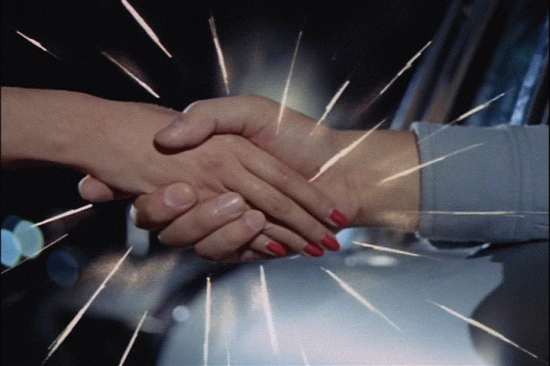Meet the Shortlist- Sami Ibrahim
The European Hare By Sami Ibrahim ‘If I told you that hares can speak you wouldn’t believe me. But they do. This one does. Its…

I’ve been asked to write about what makes a play a play.
And I’m going to start by calling this concept “liveness”. The liveness of theatre is what sets it apart from any other type of storytelling. Liveness is why a play can only be a play: why it has to be put onto a stage, in front of an audience, and isn’t sitting in the fiction section of a bookshop or popping up on Netflix.
As far as I can make out, there are six factors that make a play live. And I need to immediately caveat this by saying I’m almost certainly wrong. Other people will have other lists and other factors – not to mention the fact that the pandemic has opened up a whole new realm of work that happens remotely. But, for now, this is what I’ve learnt from a few years’ worth of writing live theatre.
In this workshop (article? ramble?), I’ll briefly talk a bit about each of these factors and then focus in one of them – the one I think is the most difficult and elusive and exciting.
As we go through these factors, I want you to think about how each one can apply to your own work. Some of the time, you’ll be able to control the factors, some of the time you simply won’t, some of them might be useful to ignore. But, if you keep them at the back of your mind as you write, they’ll hopefully help you get to grips with how and why your play is truly live.
So, here we go, the six factors:
You have to be there
I’ll start with the most obvious. For a play to be a play, you have to be there, in a theatre, sat in your (un)comfortable chair, watching sweat drip off an actor’s face. If someone in the room starts talking, if a prop is dropped backstage, if there’s a funny smell, or a siren goes off outside, we’ll know about it. But we’ll also know when everyone laughs together – or when the room is absolutely silent. It’s why we go to the theatre: to turn up and share in that single experience. And, in a way, there’s no controlling this element. It’s just a fact of live performance. Audiences are unpredictable, things always go wrong. But, since there’s no changing the fact that your work will play out in that unpredictable environment night after night, it’s worth trying to pin down the things that you can control.

Using the audience
The first thing that springs to mind is the audience. If you have an audience, how are you going to use it? Or, more precisely, how will your play engage with that audience? Will your play acknowledge it? Will a character speak to it directly? Or get it to join in for a singalong? Or will the play pretend that the audience isn’t there? All options are available but, whatever you decide, an audience will be present – so think about how and why you choose to acknowledge or ignore it.

The whole time
And don’t forget that your audience will be present the whole time. From beginning to end, including the interval, you’re sculpting a complete evening’s worth of entertainment. Unlike in film, you can’t simply cut from location to location. On screen, one scene ends and the next simply begins but, on stage, you might need a scene change. And the audience will still be watching as stage hands wheel off a sofa and carry on a table. So have a think about what it does to your evening to pause your story, reset, and then continue. If your play has an interval, figure out the best moment to send your audience off to the bar to discuss the first half. There’s no right answer to this, just a load of different possibilities. Some plays choose to tell their story across a single, interval-less scene (Lucy Kirkwood’s The Children is a great example); others are filled with a host of short, sharp scenes (Caryl Churchill’s Love and Information is another great example). Whatever you decide on, it’s worth considering how you divide your evening up and what you do with an audience’s time.

The whole space
Similarly, the audience will always be able to see the whole stage. There are no close-ups in theatre but you can still think about what you want your audience to be looking at. When I’m writing, I try to picture the whole stage in front of me, imagining how my characters will be moving around in that space. Inevitably, a director will have the final say on this, but I always keep in my head that a play is written to be performed. Try to imagine your play taking place on an actual stage – if it’s helpful, pick your favourite theatre and drop your characters into it. And then ask yourself: how much of the space am I choosing to use? Am I containing my characters in a small section of the stage or am I filling the whole stage up?

It could go wrong
It really could! Which sounds like it should be a bad thing but think about how you can use this element of risk to your advantage. After all, it’s thrilling to watch something slightly perilous happening on stage: an improvisation, an audience interaction, a bit of juggling (why not?) can all be really effective if deployed correctly. Even something as simple as a well-honed piece of dialogue can feel risky. In Yasmina Reza’s Art, one character has to recite an absurdly-long speech at break-neck speed. The audience inevitably breaks out into applause at the end because it can feel how much effort the speech takes to recite, how easily it could have failed. Of course, I don’t advocate chucking fire-juggling into every scene, but it can be useful to think about how your script challenges an actor. Whether it’s a task to perform, a speech to recite, or something else, are there any moments in your play which have the potential to go wrong?

The deal
Bear with me on this one. We’ll spend a lot of time going through it because it’s the most difficult to explain and the trickiest to pin down.
Perhaps it’s easiest to think about it like this. If I walk onto an empty stage and say “we’re at the top of a mountain”, then the whole audiences simply accepts it. The audience’s imagination is immediately sparked, everyone agrees we’re at the top of a mountain, and we’ll stay at the top of a mountain until someone tells us otherwise. Somewhere, between the stage and the audience, a deal has been brokered: an act of imagination that we all share in. And that deal only happens because an audience has turned up and agreed to imagine something that isn’t really there. It’s a trick which theatre pulls off that doesn’t quite happen in any other medium.
In a film, things work differently. The only way of achieving the same effect is either to lug a camera to the top of a mountain or to hire out a green screen. Which is fine – but it costs a whole lot more and is a whole lot less fun. For my money, the deal a play makes with its audience is where theatre really feels live – as well as alive. So I want to spend a bit of time delving into it.
Before we start, however, I should say that most of the time this deal functions in quite a straightforward way. Say we’re watching a play set entirely in someone’s living room. The play begins and the deal is this: the audience agrees to suspend disbelief and imagine that it’s looking into someone’s actual living room. It’s a valid deal and it’s all very well and good. But I want to show you some examples where this deal can work in stranger and more exciting ways…

First things first: setting up the deal.
Below, is a short extract from A Table Tennis Play by Sam Steiner. It’s a wonderful play and the starting point is simple: Callum and Cath clear out an old air raid shelter which has been used to store a load of household items. On stage, these household items are represented by ping pong balls and, when a character called Mia enters towards the end of the first scene, this interaction takes place:
Callum picks up a ball and shows it to Cath. Cath smiles, laughs a little.
Mia: (re the ball) What’s that?
Cath: What?
Mia: The…
Cath: Oh it’s a tea cosy?
Mia: Oh. Ok. Cool.
So a deal has been struck. From now on, the audience will believe that the ping pong balls are actual household items. It’s a simple deal, just a small moment where the audience is asked to take an imaginative leap. But, once it’s been established, it opens up a whole load of options.
I won’t go into what happens in Sam’s play, but I want to talk through what paths a writer who’s set up this deal could theoretically go down.
It might go something like this:
All of the options are available and I know it all sounds a little obvious, but perhaps it’s helpful to think of this as the building blocks of the deal. Then, once you figure out how to set it up, you can exploit it for increasingly complex and ambitious ends.
Next: how the deal evolves
Now I want to show you some extracts from You For Me For You by Mia Chung. It follows two sisters from North Korea. One of them, Junhee, escapes the country and makes it all the way to the USA. When she first arrives, she meets a character called Liz – who speaks like this:
LIZ
So,
vagaforaga tee prippippripp. Diffara tominik ayze seddy
idgin saylasay gimmery dada reetoon. Weevbanty faydy
nimicky ray doray pikka dizheen. Sardan borry mellish
inta theer ashy lim namanamay. Anu kwazzy farith edger jimjim enjy pree. Kalin dimma ray torick wunna rax. Ovada niff rashen
shutty doo illjuss imin, uh kay?
What the audience realises is that we’re hearing Liz from the perspective of someone who can’t speak English. A deal is made where the audience imagines that this is how Americans sounds to Junhee: we accept that this gobbledygook is actually English. Over the course of the play, however, the way Liz speaks changes. A few scenes later, she speaks like this:
LIZ
Nurse, morriba pay. Westa doctor cumby? Thinkanee chaina catha. Havinaseeny view law tie. Canava magazee? I axfa nexta pill yesty busty hagotton. Izzummy beepee thashoona beepee? Sowla summyshoona beepee, canoochet? Iztha lunch? Thakgommy starvy.
And a few scenes after that, like this:
LIZ
Anything me uncomfortable always door open anytime help need of course questions confidential trust need uncomfortable tell comfortable fine any point.
Slowly, Liz’s speech becomes more and more coherent. It’s a brilliant trick to demonstrate how Junhee is starting to learn English. And it’s all achieved by setting up a clear deal with the audience, before slowly letting it evolve throughout the play.
Finally: breaking the deal
This final example is from Dennis Kelly’s Girls and Boys. I’m afraid I’m about to give away a massive spoiler but I promise it’s worth it.
To give some context, the play is a monologue, delivered by a woman who tells us the story of her marriage. Throughout the play, the monologue is interspersed with scenes of the woman (who remains unnamed) interacting and playing with her two children from the marriage. The children aren’t physically on stage but the audience buys into the deal: we suspend disbelief and accept that the children are – at least in our imagination – present.
Then, just past the half-way point and during an argument with her children, the woman says this:
Danny, please, stop that!
Danny!
Beat. She looks at the audience. A moment. Then…
I know they’re not here by the way.
My children.
It’s not like…
I mean it’s not like I think they’re actually here. I know they’re not. I know they’re not here, I know they’re dead.
At this moment, the deal of the play breaks. We thought we were watching one thing and suddenly we realise what’s actually going on. This character’s children are dead, they have been the whole time, but it’s only now that she can bring herself to tell us. It’s a brilliant moment not just because of the way it alters the narrative, as well as her character, but also because it plays with the liveness of theatre. We all bought into that original deal – we all decided to accept that the children were real – and it now feels truly shocking to see that deal broken so suddenly.
In a way, it might be useful to think of all these examples as functioning like small stories in themselves. After all, like a story, the deal you make with an audience can have a beginning, a middle and an end: it’s set up, it evolves and then comes to a close. And, as with a story, how this all happens is entirely up to you.
All this means that it’s now your turn. I’ve mentioned a few examples of how the deal can work but I’d rather you thought of them as a buffet rather than anything definitive. Have a nibble: try things out. Which of these sparks something in your imagination, what feels exciting, and what other deals can you picture?
As you start getting your ideas down, I thought it would be useful to end with some questions to ask yourself. These can be good to ask during the planning stage (if, like me, you happen to be a planner). But they can also be useful later on, once the play is written and you’re trying to make sense of that overwhelming first draft.
So here we go:
And that’s it. I’m now going to end things with a bad joke, while you go off and do some writing. Do we have a deal?
Plays Referenced
Sami’s first full-length play, Wind Bit Bitter, Bit Bit Bit Her, had a run at VAULT Festival 2018 – after it was shortlisted for Soho Theatre’s Tony Craze Award, longlisted for the Bruntwood Prize, and published by Nick Hern Books as part of their collection of best plays of the festival. His short play the Palestinian in the basement is on fire was performed at Pint Sized’s October Fest at The Bunker Theatre, and his piece Iron Dome Fog Dome was staged at The Yard during their last First Drafts season. In 2019 he was announced as the winner of Theatre Uncut’s Political Playwriting Prize for two Palestinians go dogging, which will premiere in 2020 at the Royal Court, to be directed by Omar Elerian.
He has written a play for Oxford Drama School, and is currently under commission to the Yard. He is one of three writers-in-residence at the Globe Theatre, working on a new commission, and he is one of the Genesis new playwrights at the Almeida. He has been a member of Tamasha Writers Group, the Oxford Playhouse Playmaker scheme and has been a writer-in-residence at Theatr Clwyd and on attachment at the National Theatre Studio. He is currently developing a feature film, off land, with the BFI Early Development Fund, a television project with Expanded Media and he is part of the BBC Drama Room.